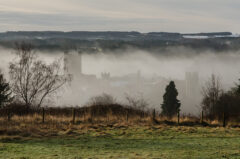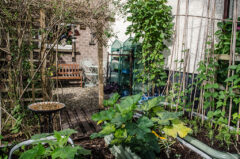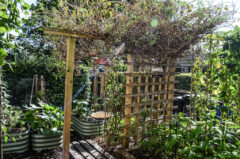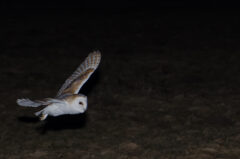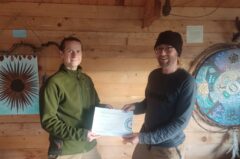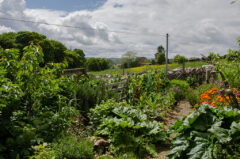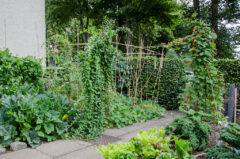As the squash grows larger in the September sun it’s a good time to catch up with how the edible forest garden is looking in 2023.
In November 2017 standing at the gate looking into the garden (see above left image) I had visions of grandeur to turn this green food desert into an edible food forest. As we head towards six years from the beginning of removing the dogwood and other random shrubs from my back garden that vision is now a reality (see above right image).
Of interest, the garden now holds a fruity collection of, a cherry tree, a plum tree, a fig tree, a goji berry bush, 3x blackcurrant bushes, 3x chuckleberry bushes, raspberries, rhubarb, strawberries, alpine strawberries. There is also a selection of herbs, sage, oregano, savory, fennel, various mints, chamomile, salad burnet, lemon balm, lemon verbena, valerian, lavender, yarrow, chives, calendula, comfrey. The garden also has an ever-increasing perennial leek colony, Jerusalem artichoke, oca, sunflowers and this year the addition of winter squash growing along espalier wires that have been installed in the garden.
I also discovered my first large frog in the garden this summer, a much-welcomed sight. Looking back to the original photograph of the garden, wildlife habitat was extremely low. Throughout the summer the garden is a buzz with bees and other insects. Butterflies and moths are now a common sight and the bird species that visit the garden throughout the year are incredible. The hedgehogs still use the garden as part of their nightly forage, and I have wood mice living in the garden all year round.
Next year the plan is to focus on additional wildlife habitats. Currently, I have two small wildlife ponds, I would like to increase the size of the pond nearest to the house to encourage damselflies into the garden along with newts.
So far now please enjoy a few photographs of how the garden is looking.












